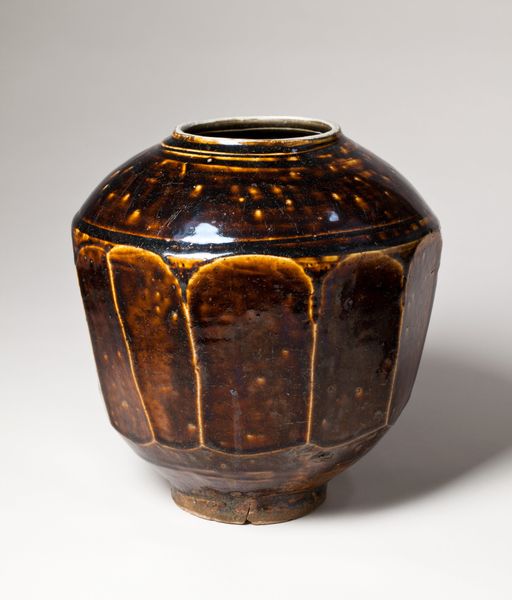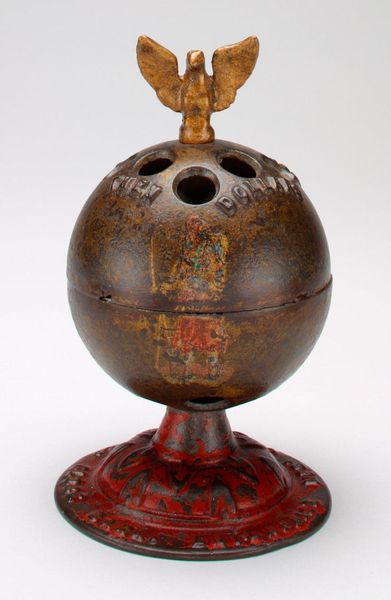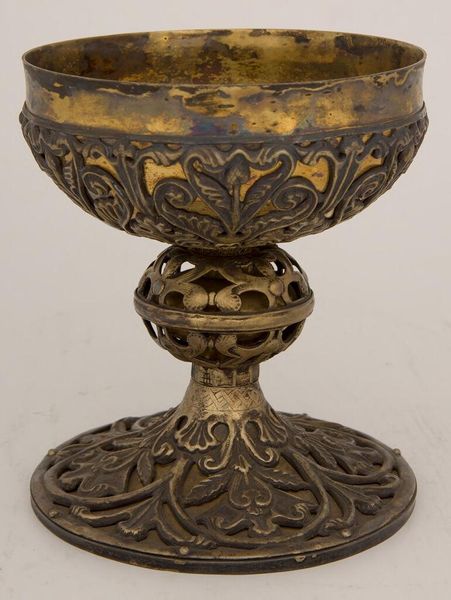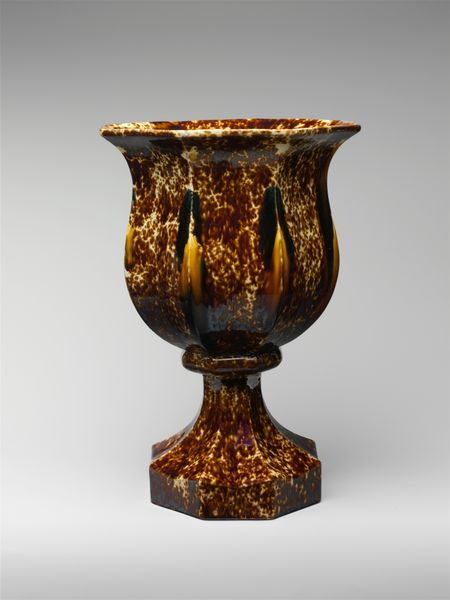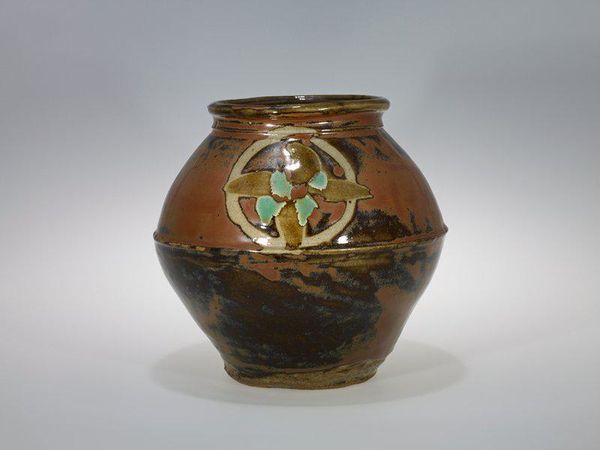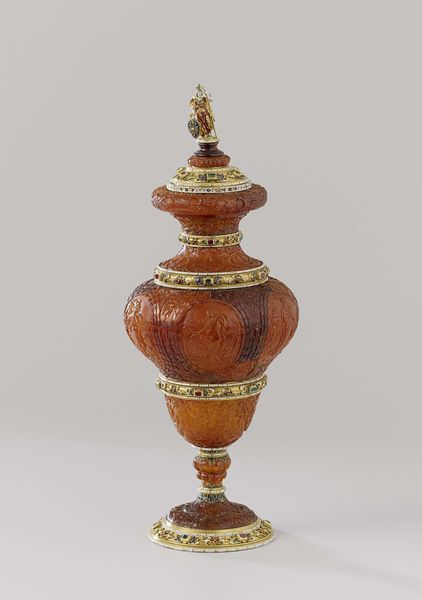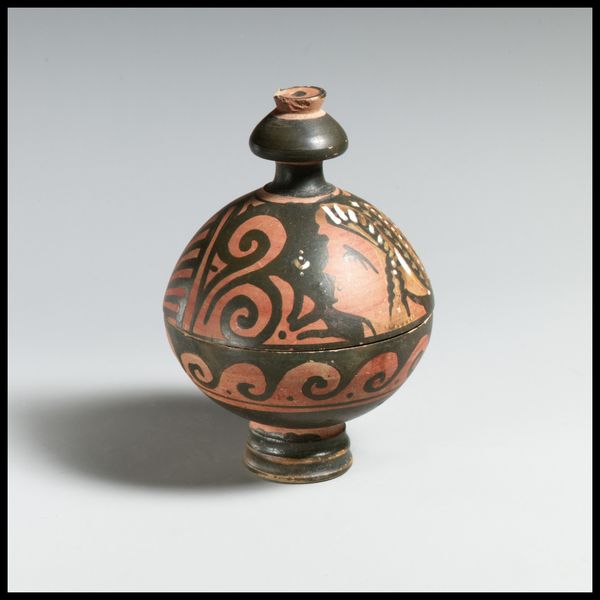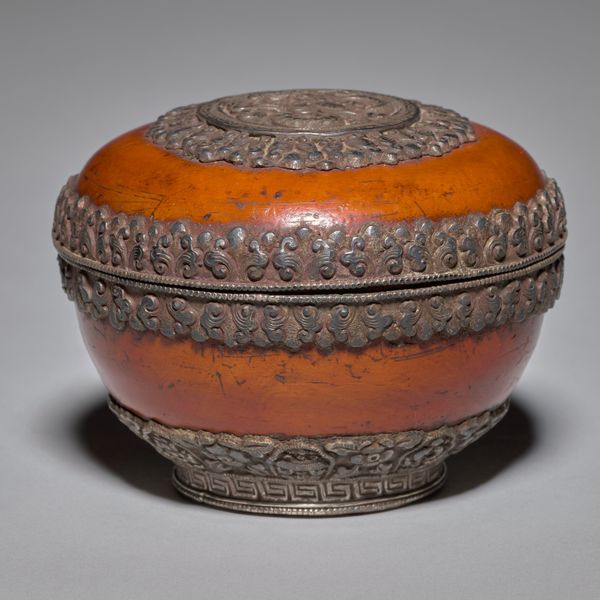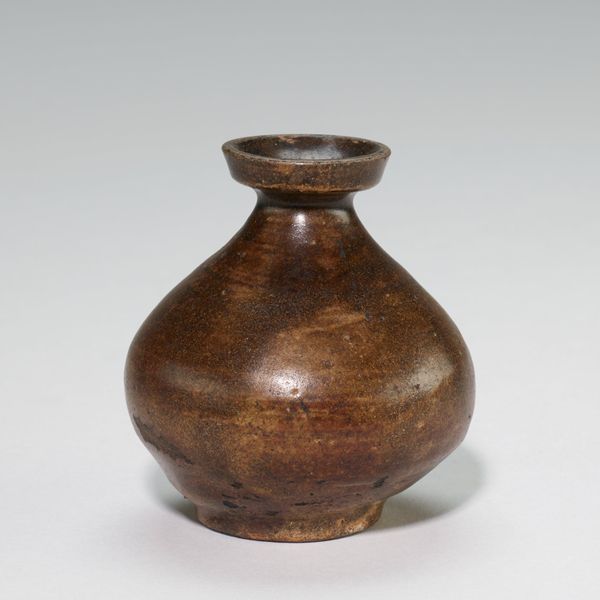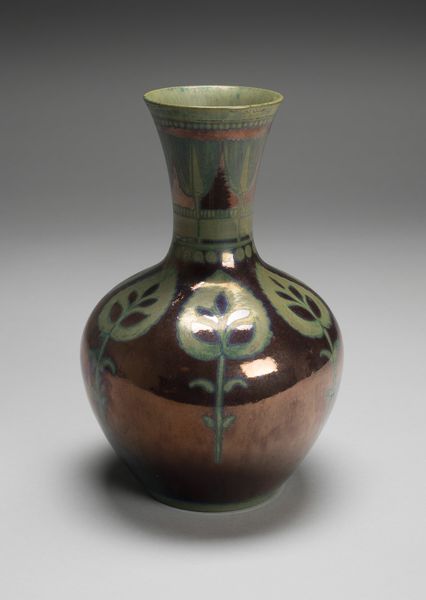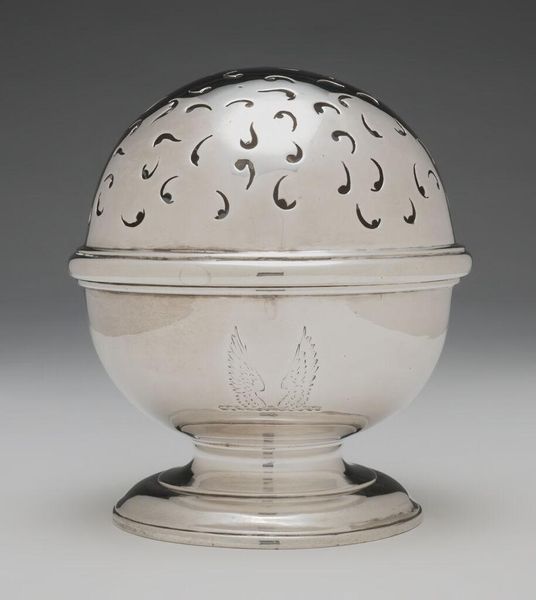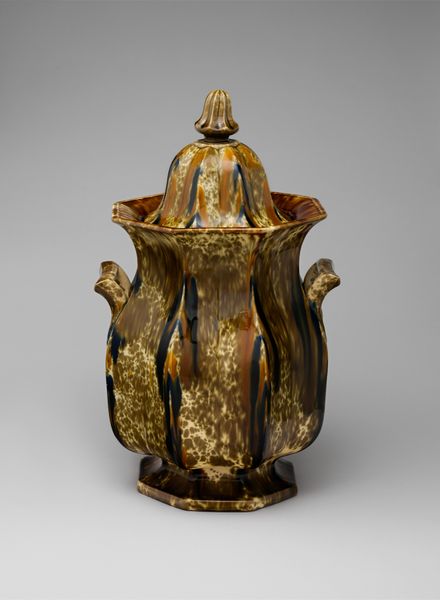
ceramic, earthenware, sculpture
#
neoclacissism
#
ceramic
#
earthenware
#
stoneware
#
sculpture
#
scottish-colorists
#
decorative-art
Dimensions: 5 5/16 x 4 1/8 x 4 1/8 in. (13.49 x 10.48 x 10.48 cm)
Copyright: Public Domain
Curator: This unassuming piece, a ceramic and earthenware "Scottish Money Bank," made around 1780, appears quite humble. But I find it fascinating. Editor: I agree. At first glance, it seems like a simple, almost decorative object. It has such a swirling glaze. How should we interpret its function in the period? What kind of audience was it speaking to? Curator: Well, let’s consider the materials. Earthenware was quite common, accessible. The form mimics more luxurious items perhaps crafted in metal, yet this is decidedly a "common" material. The act of saving becomes material; delayed gratification tangible and present. We can ask: what labor went into shaping the clay, firing the kiln, applying the glaze? Was it piecework? Editor: It really underscores how even mundane objects embed socioeconomic realities. This little sphere embodies big ideas about labor and accessibility, not just saving. Curator: Exactly. And notice the subtle Neoclassical elements within its decorative art style: the perfect symmetry, the rows of small 'beads.' These details mimic luxurious designs but made affordably for a burgeoning middle class. A money bank makes clear reference to class stratification. Is this form purely decorative, or is it more practical and tied to production methods? Editor: That’s a perspective shift for me. It's like a commentary on the societal shifts, available to those excluded by older social structures. Curator: Precisely. Seeing it through a material lens really opens up the narratives embedded within what could easily be dismissed as a simple “money bank”. What did you think you'd see in this object, initially? Editor: At first, I was taken by its somewhat primitive charm. But now I see it reflecting complex economic and social systems. It gives a face to a demographic that wanted in on upward mobility. Curator: Right, it is more than the object’s simplistic form; we explored it using material history to better understand its purpose within labor dynamics.
Comments
No comments
Be the first to comment and join the conversation on the ultimate creative platform.
